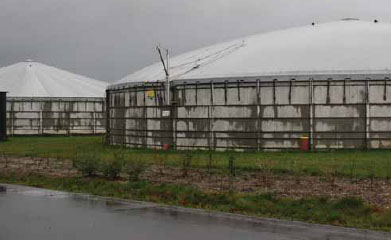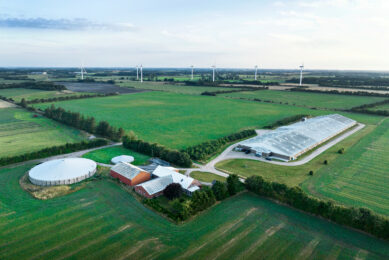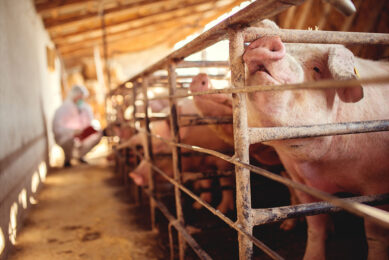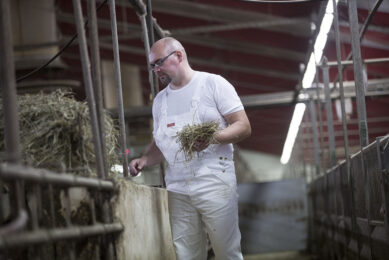Biogas gains ground on Danish and Austrian pig farms

No doubt, Germany is Europe’s number one when it comes down to government investments in biogas production. Other countries, however, like Austria and Denmark, have also implemented government schemes to encourage biogas installations on pig farms. What initiatives have been developed?
Denmark: 50% of manure to biogas
The Danish government wants to see that at least 50% of all farm manure produced in the country is used to make biogas within the next ten years. Enticements to encourage this development include 20% capital grants and high electricity prices where the current is supplied to the power network by the farmers. Under the Danish government’s so-called ‘green growth’ programme, biogas production is seen as an important tool in the reduction of climate-changing gases from Danish agriculture.
If 50% of manure from Denmark’s 1.5 million cows and around 13 million pigs is fermented to gas, the government reckons this could reduce the country’s production of climate-changing gases by as much as 8%. The ‘green growth’ programme is to be fully introduced throughout 2010 and is Denmark’s way of implementing EU climate protection and water biodiversity legislation.
Currently there are only around 80 farms in the whole country with biogas plants out of around 5,500 pig production and 5,300 dairy farms. So far, Denmark has specialised more in centralised municipal or cooperative biogas plants where manure from farmers as well as industrial by-products such as slaughterhouse waste is processed. There are around 20 of these and the biggest plant processes manure from 60 farms with a delivery of 200,000 tonnes manure yearly.
“Naturally, only a small percentage of Denmark’s farm manure is processed so far. But under the ‘green growth’ programme the state wants to have more than 50% treated before 2020,” explains Thorkild Q. Frandsen, chief biogas system adviser with the state agricultural advisory service Dansk Landbrugsrødgivning. He adds that, so far, the government has discussed a 20% capital grant for new centralised biogas plants. “We want this grant to be given for new decentralised farm biogas units too and will be helping farmers negotiate for this,” he says. The government also plans, according to Frandsen, to pay the equivalent of €0.12 per kWh for electricity produced from biomass-powered generators. This price, which is double the average cost of electricity to industrial customers in Denmark, is to be guaranteed for 15 years. However, farmers argue that they would need at least 14 c/kWh to make any income from the manure biogas. City power and heating stations have also seen possibilities in cheaper energy through a countrywide increase in biogas production. They are planning pipelines taking farm-produced biogas to central power stations. One such city, says chief advisor Frandsen, is Ringkøbing in West Jutland. “We are also helping farmers start negotiations for the right to feed specially prepared biogas straight into the national natural gas pipeline network.”
Austria: Pig manure as fuel
Farm size is relatively small in Austria, with an average of 18 hectares. The government wants to keep it this way for social reasons. This means there’s a big demand for ideas towards improving agricultural income while keeping the carbon footprint as small as possible from the republic’s 190,000 farms.
Vienna sees on-farm biogas production from manure as one answer to both these challenges. Biogas was welcomed with open arms at Austrian farms (335 at the last count) with most gas produced from fermented manure and greencrop fuelling engines that in turn power generators and earn around €0.16 per kWh fed into the national grid. Even more efficient and just as lucrative was the next plan – to process the biogas on-farm to meet natural gas standard (minimum 97% methane) and feed it straight into the national natural gas pipeline network. Already, more than 8% of gas supplied through the natural gas network is now biogas from farms. The network involves 5,000 km of underground pipelines supplying towns, villages and farms. The compressed natural gas (CNG) has also been subsidised as automotive fuel. It is being offered at prices 50% cheaper than petrol and 25% cheaper than diesel. The new popularity of CNG fuel with motorists has encouraged the government to look at pure biogas as an automotive fuel and thus yet another income possibility for pig producers and other livestock farmers.
Austria’s environmental protection agency contracted engineers to have a look at possibilities and the national Steyr tractor company (Fiat/Case IH group) became one of the first tractor manufacturers in Europe to come up with a tractor that could use pig manure methane as fuel. This first machine was a 200 HP tractor with 400 litres of biogas stored in tanks above the cab roof. This has now been changed for safety and stability reasons to tanks under the cab floor or in a front-mounted tank. The prototypes run on a 50:50 diesel-biogas mix with a completely unaltered engine. Existing tractors can be converted to run on compressed natural or biogas at a cost of around €23,000 per tractor and the Austrian government offers a farmer grant covering 30% of this expenditure. Steyr engineers say the remaining investment is paid back on saved fuel bills on any normal farm within four to five years. Also ready for changing to farm-produced biogas in Austria are machines already using CNG as fuel including ski-piste graders, trucks, SUVs and even a Harley-Davidson motorcycle. Even more efficient and just as lucrative is the next plan – to process the biogas on-farm to meet the natural gas standard (minimum 97% methane) and feed it straight into the national natural gas pipeline network. This ploy has been so successful that by last spring 8% of gas supplied through this network is actually biogas from farms.
Scientific tests are showing that the biogas fuel is exceptionally good for the environment. The Steyr biogas prototype with its 6.6 litre V-6 turbo-diesel fed on 50:50 – biogas: diesel – cuts hydrocarbon and carbon monoxide in exhaust emissions by 87% and 97% compared with pure diesel. CO2 emissions are down by 20% and nitrous oxide output by 17%. Running costs reduction? About 40%, according to Steyr.
Source: Pig Progress magazine Volume 26 No. 1













